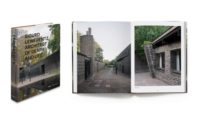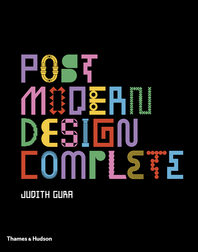GOLEM AND FRANKENSTEIN
Libeskind seems to have inherited some of the attitudes of the strange early Twentieth-Century organic tradition, that first cousin of expressionism. As a result, when he must confront the issue of life, as opposed to death, in a building like his Jewish Museum in San Francisco (the working title of which was L'Chaim--"To Life") rather than ask questions of life itself, he reaches for the formal analogy offered by the Hebrew alphabet. The phenomenologist in him accepts no distinction between a "real" object such as, for example, the fine, classically-composed substation façade which will be the frontispiece for this new museum space, and the "irreal" strokes of the scribe's pen, to which he makes appeal.
There could, intriguingly, be more to it than this. Libeskind has confessed on occasion to his attraction to the Cabalistic dimension of Jewish thought. One of the most famous Cabalistic myths--originating in 16th century Central Europe, the place where Libeskind himself was born--is that of the Golem given life by Rabbi Judah Loew ben Bezalel of Prague. The Hebrew word golem means "shapeless mass"--a description one might in any case apply to Libeskind's contribution to the new San Francisco Museum. In myths like that of Rabbi Loew, a lifeless effigy is animated by the agency of a sacred word placed under its tongue.
Libeskind's own account of how he generated the form for the San Francisco Museum uncannily recalls the Golem myth. He took the two Hebrew letters of chai--which he says are "literally the life source and the form of the museum"--and translated these strokes on paper into concrete forms in three dimensions, so as to bring "life" to the Yerba Buena district of San Francisco. (Ironically, our friend the architect Isaac A. Meir says of Libeskind's transformation of letters to building form that the letter heth has been drawn/redrawn inaccurately--or, at least, in a very "personalized" form--and the final building form is unlikely to remind anyone of a special Hebrew letter, let alone a word).
The Golem of Rabbi Loew--intended to be a perfect servant of his master, a protector of the race--turned out to be a destroyer, which its creator had in turn to destroy, to prevent it desecrating the Sabbath. Yes, the Prague tale is the earliest version of the Frankenstein story, and Libeskind's San Francisco Museum a literal example, therefore, of that "Frankenstein architecture" which the critics of modernism have often warned of. There is no better illustration of the profound contrast between what Libeskind means when he speaks of investing buildings with "life", and what most people would appreciate as living environments.
GEOMETRICAL DETERMINISM
There is another, related point. A paradox of Libeskind's work is that an architect who claims to be so in thrall to the chaotic, the complex, the open-ended, and the democratic, should produce buildings so deterministic, and which leave so little to chance and personal choice. One should be wary of drawing conclusions from Libeskind's own words, because he is a master at producing a veritable fog of words on demand. Boaz Ben Manasseh in The Architectural Review (June, 2001) observed that: "It is astonishing that Daniel Libeskind can write so much nonsense without endangering his reputation." But the architect has made it clear that he expects his buildings to communicate even to those who are unfamiliar with the apologies he provides for them.
The first of his buildings ever to be completed--the museum in Osnabrück devoted to the works of the local Jewish painter and Holocaust victim Felix Nussbaum--offers the same deterministic experience as the Berlin museum. Like the Berlin exhibits, Nussbaum's paintings are effectively stripped of their intrinsic, timeless qualities by the building they occupy. The paintings serve as little more than supporting documentation for the story which the architect has deemed more important--that of a flame being snuffed out.
Both these buildings display an arbitrary kind of determinism. For example, in Berlin there is a long rising staircase, offering one of three routes out of the underground passage (the only real route in fact, two of them being dead ends). This semantic confusion is matched by an approach to planning which, while intent on driving visitors along a particular route, nevertheless robs them of any sense of direction. This failure is made even worse by the architect's apparent indifference to the effect on circulation of merely practical elements such as fire doors in the Nussbaum Haus. Perhaps this disorientating dissonance is the point of such architecture. Both museums speak of death by having their galleries violated in some way.
Everywhere in Libeskind we find the rule that disallows contingent life its expression through either multiple connectivity or the processes that develop connections; and that therefore excludes spontaneity and emergence. Instead, he offers THE ANSWER, allowing no possibility of alternative interpretations. Libeskind's buildings, wrought with finality and closure, provide an urgency that will not allow life the leisure to unfold, and which are not sufficiently in touch with life as lived to be able to learn from it. It could well be possible to prove, with reference to living processes, that a classical museum by John Russell Pope, which offers such variety within such apparent unity, is more truly alive in most, if not all, respects than one of Libeskind's deconstructivist essays.






